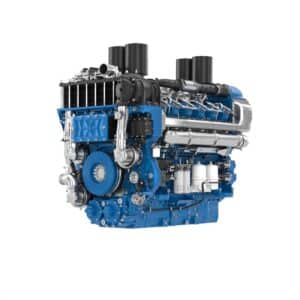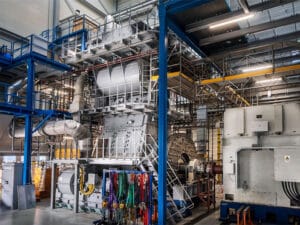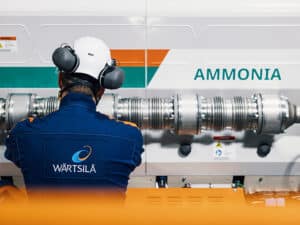
Q&A: e1 Marine on methanol to hydrogen fuel cell technology
Written by
Robert Schluter, Managing Director of e1 Marine
Back in September, an independent study conducted by maritime research house Thetius revealed that methanol to hydrogen generator technology, developed by Bend, Ore., based renewable energy technology pioneer e1 Marine, can significantly reduce EPA-regulated emissions by up to 99% when using gray methanol when compared with conventional diesel engines for inland waterway vessels. The technology can also reduce GHG emissions by up to 85% when using green methanol as feedstock in the same application.
To better explain this study and the technology behind it, Robert Schulter, managing director at e1 Marine talks to Marine Log.
Marine Log (ML): First, what are your thoughts on the new report, and what should maritime operators take away from it?
Robert Schulter (RS): The “Towards Zero” report demonstrates that methanol to hydrogen generation technology combined with fuel cell systems can make a significant and quantifiable contribution to reducing a range of harmful emissions when compared with diesel engines.
Today, operators can be assured that our system could reduce GHG emissions by up to 27% using readily available gray methanol. The savings increase to 57% by using a blend of gray and green methanol; if just green methanol is used, this can reach up to 85%. Just as importantly, e1 Marine’s technology will eliminate EPA-regulated emissions, including NOx, PM, HC, and CO, by 99%.
Although the modeling that was independently verified by Thetius was based on the operational profile of inland diesel workboats, emissions savings can be achieved across a range of applications. For example, for larger vessels burning cleaner fuels in transit, the solution can help maintain a sustainable emissions profile when vessels are in port by using this for cold ironing.
In turn, ports will be better positioned to meet increasingly stringent environmental targets, both by reducing the level of emissions generated by vessels hoteling or from other shiploads by using this technology in modular form alongside fuel cells to create electricity for ongoing port operations, as electric cranes, drayage trucks and powering other port equipment.
ML: What should inland or short-sea shippers take away from the report’s findings?
(RS): Inland and short-sea shippers have been hearing for some time now that they make up 15% of commercial shipping, which is easier to decrease. However, from our conversations with many small vessel operators, there is still a lot of uncertainty about the most viable route to achieve this.
Until now, they have used hydrogen as a power source for smaller vessels, which was inconceivable due to its storage requirements. However, with our technology, hydrogen power can be created on demand from methanol and water.
The results are impressive for smaller vessels by making hydrogen fuel cells a reality today with emissions benefits. Vessels with hydrogen fuel cells propulsion using hydrogen generators reforming methanol and water as feedstock would produce up to 28% less GHG emissions using gray methanol today. In contrast, an EPA tier 3 compliant marine diesel engine would produce more carbon dioxide, ten times more CO, and four times more methane on the same vessel.
As discussions around alternative marine fuel options continue, this data strengthens the argument that smaller vessel operators have options at their disposal, particularly through hydrogen fuel cells and batteries. It’s our goal to provide a renewable, flexible and cost-effective power source to enable the scaling of these solutions.




